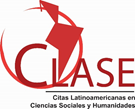Seguridad alimentaria en hogares urbanos y periurbanos del Consejo Popular “Buena Vista”, Cienfuegos
Resumen
Con el objetivo de comparar componentes de la seguridad alimentaria entre los hogares de la zona urbana y periurbana del Consejo Popular “Buena Vista” de Cienfuegos se realizó una investigación no experimental con un diseño transversal para los meses de marzo y abril de 2018. La información de 255 hogares, de forma representativa y escogidos aleatoriamente, se obtuvo mediante encuestas realizadas que incluyeron descriptores sociales, HFIAS (Escala del Componente de Acceso de la Inseguridad Alimentaria en el Hogar) y ELCSA (Escala Latinoamericana y Caribeña de Seguridad Alimentaria), recordatorio de oferta en el hogar de 21 alimentos y valoración de aspectos indirectos que influyen la inseguridad alimentaria. Predomina el sexo femenino en las personas que administran la alimentación en el hogar, con alto grado de escolaridad terminado. La inseguridad alimentaria severa en hogares se encontró con valores bajos entre 5,7 % y 8,9 % (HFIAS) y 1, 8 % y 1,9 % en hogares sin menores de 18 años (ELCSA). Se declara consumo habitual en ambas zonas el arroz, vegetales y café y bajo consumo de leche, pescado, pastas y frutas. Influyen negativamente en la seguridad alimentaria la disponibilidad y el acceso de los alimentos. Algunos indicadores que reflejan inseguridad alimentaria a nivel de hogar son bajos y no hay diferencias entre las zonas estudiadas.
Palabras clave:
Alimentos, acceso, consumo, cuestionario, disponibilidad.
ABSTRACT
With the aim of comparing components of the alimentary safety among the homes of the urban and peri urban area of the Popular Council "Buena Vista" of Cienfuegos was carried out a non-experimental investigation with a traverse design for the months of March and April of 2018. The information of 255 homes, in a representative form and aleatorily chosen, was obtained by surveys that included social describers, HFIAS (Household Food Insecurity Access Scale) and ELCSA (Latin American and Caribbean Food Security Scale), a reminder of 21 food offerings in the homes and an assessment of indirect aspects that influence food insecurity. The feminine sex prevails as person that administers the feeding in the home, with high level grade finished. Severe food insecurity in households was found with low values between 5.7% and 8.9% (HFIAS) and 1,8% and 1.9% in households without children under 18 (ELCSA). Rice, vegetables and coffee and low consumption of milk, fish, pasta and fruit are declared as regular consumption in both areas. Access and the high price of food negatively affect food security in both areas. Some indicators that reflect food insecurity at the household level are low and there are no differences between the areas studied.Keywords:
Food, access, consumption, questionnaire, availability.Descargas
Publicado
Cómo citar
Número
Sección
Licencia
La editorial "Universo Sur", de la Universidad de Cienfuegos, publica el contenido de la Revista "Universidad y Sociedad" bajo una Licencia Creative Commons Atribución-NoComercial-SinDerivar 4.0 Internacional.
© Podrá reproducirse, de forma parcial o total, el contenido de esta publicación, siempre que se haga de forma literal y se mencione la fuente.










